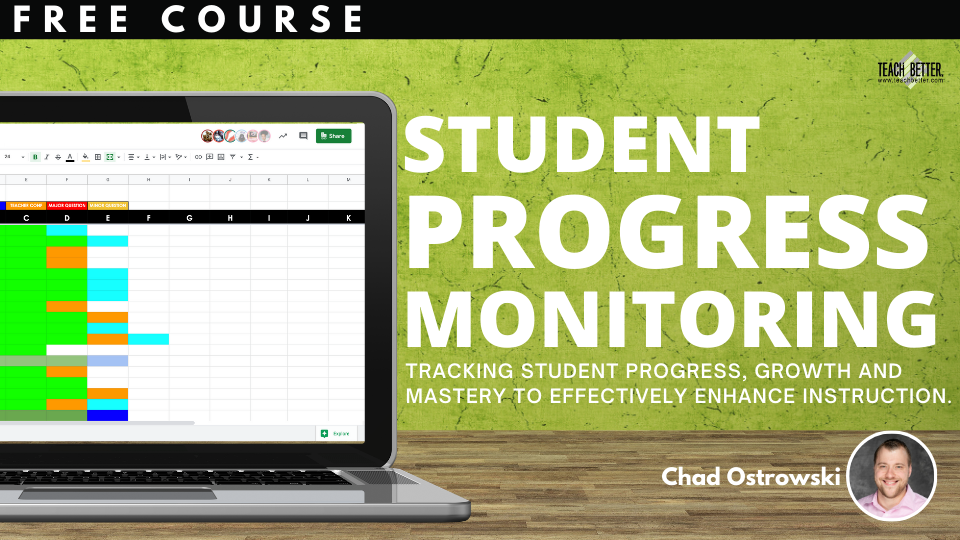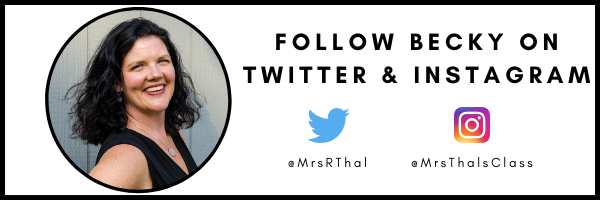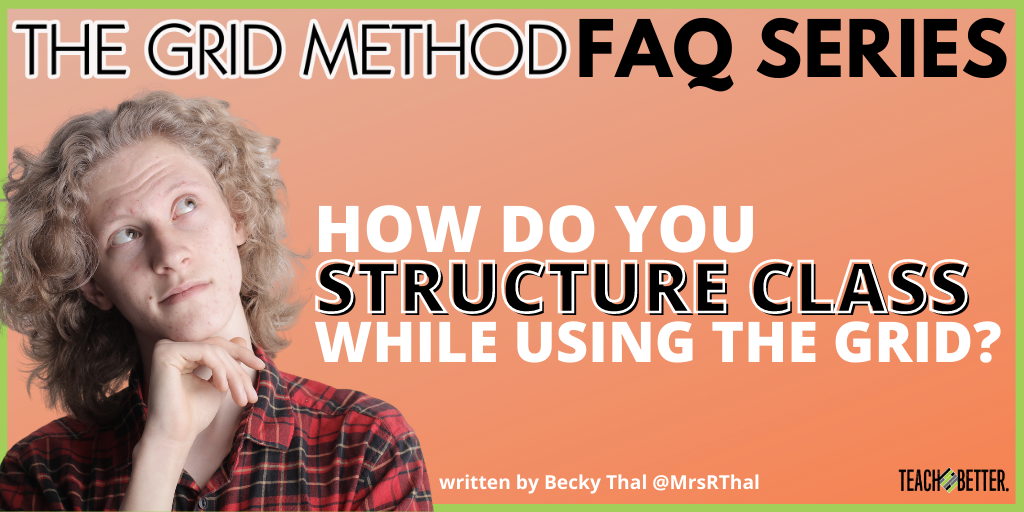TL;DR:
- Structuring class time while using The Grid Method involves incorporating a warm-up and time for goal setting, a mini-lesson, conferencing, wrap-up, and reflection.
- Tasks assigned to students should be relevant, meaningful, and allow them to take ownership of their learning.
For folks new to The Grid Method, one of the things they struggle with most is trying to understand how to structure class time while using the Grid. People often ask, “What does a typical math period look like for you?”
I can tell you this: No two days are the same! While it’s true that the students are working at their own pace, structuring your class time together generally ensures that everyone stays engaged, focused, and on task. To give you an example, I will walk you through my typical math class (pre-COVID).
How to Structure Class: Warm-Up and Goal Setting
I have a 66-minute math block. When students first come in they spend 5-10 minutes with a warm-up or “do-now.” I like to vary them: some days they complete 2-3 standardized test practice questions; other days they verse each other in an online game or complete a math literacy or spiral review activity. It’s important to set a timer to keep yourself and the students on track.
Once the warm-up is over, students spend 5 minutes or less setting a goal for the day. At the beginning of the year, students tend to set lofty goals for a single day. However, as the year goes on, students realize what is realistically attainable, and they adjust their goals accordingly.
Just like you don’t always accomplish everything you want to in a day, the students might not either…and that’s okay. There is always tomorrow. Click To TweetHow to Structure Class: Mini-Lesson
After our warm-up and goal setting, one of two things happens: I give a 10-minute whole group mini-lesson on the current topic, or students pick up where they left off the day before. Not all students are going to be at the same place at the same time on the Grid—after all, that’s really the idea.
But when enough students have reached a certain level, I give a whole group lesson to everyone so that those ahead can continue to move forward, and those who may be a little slower are at least introduced to the new concept/material.
How to Structure Class: Conferencing
The bulk of the remainder of the period/block is dedicated to conferencing with students either individually or in small groups. This can get tricky, as you either have students who are trying to “hide” and don’t want to meet with you (but need the help), or students who want all of your attention.

Photo by NeONBRAND on Unsplash
This small group instruction never looks the same on any given day. It is driven by student needs.
One way that I keep things moving is I have a ticket system—literally, I purchased a “Take-A-Number” ticket system on Amazon (minus the digital board).
When students need to check in with me or have a question, they take a ticket. When I am done conferencing with a student or small group and am ready to meet with others, I start to call ticket numbers, just like at the deli counter! While students are waiting to meet with me, they are instructed to either move along on their Grid (if that’s possible) or work on a separate activity while they wait.
Filling Time Gaps
I’ve found it beneficial to have an arsenal of activities for students to be able to work on completely independent of the Grid. This not only helps with classroom management, but it also strategically fills time gaps in a productive way. There is always something to do, so students are not just sitting around waiting, or standing in a 10-person deep line at your desk.
I’m not a believer in assigning “busy work.” It should be relevant, meaningful, and allow them to take ownership. Some of the activities I have them do is work on their IXL personal learning goals for the month, log in to Tynker.com or Code.org and work on a course/project, or they can continue working on a Genius Hour project. Incorporating choice, not only in your Grid, but also with these kinds of activities, keeps students engaged.
[scroll down to keep reading]
How to Structure Class: Wrap-Up and Reflection
In the last 10 minutes of class, we wrap up whatever activity the students are currently working on. Students also reflect on the day. Did each student meet their goal? If not, how can they achieve it tomorrow? How can I better support them to meet their goal? Is there any homework involved? If so, now is the time to write it down.
It can be tempting to skip the wrap-up and reflection if you feel pressed for time, but it is a crucial component. Again, setting timers as a reminder to yourself and the students to move on helps keep everyone on track.
Just like you don’t always accomplish everything you want to in a day, the students might not either…and that’s okay. There is always tomorrow. This class time structure will obviously need to be adapted if you are in a virtual or hybrid learning scenario, or if you are doing half days instead of full. However, the same general format can be applied. Just as we’ve done with everything else, get creative and you’ll make it work!
Impact Story
I tried The Grid Method for the first time during remote learning last spring and absolutely loved it because of how effective it was! My understanding was based on two sessions during the Better at a Distance Webinar series offered in May 2020. It was enough to get me started. Yes, Chad is THAT good! My students caught on and adapted so quickly to this new way of learning math. They loved the flexibility, ability to work at their own pace, and the ease of using the tracking page.
The Grid Method truly honors that students learn at different rates! I appreciated how this also gave my students an opportunity to self-motivate, be accountable, and take ownership of their learning. Over the summer, I took two courses: Intro Grid Creation and Building a Grid webinar series, which are available on the Teach Better Academy. Highly recommend! I am so looking forward to using The Grid Method again as we are now face-to-face back in school. I just know they will love it! – Livia Chan, Elementary Head Teacher and Teach Better Ambassador
ABOUT BECKY THAL
Becky Thal is a 5th grade math and science teacher in New Jersey and a Data Analyst for the Teach Better Team. Prior to starting her career in teaching in 2005, Becky worked for several years in advertising in New York City. She is an active member of her school staff, currently serving on several committees including SEL, Climate and Culture, and the Future Ready Team. Becky is also an active member of her community and her children’s schools. In her spare time, she enjoys trips to the beach, trying new restaurants, and attending her kids’ various games and events . Becky lives with her husband, three children and dog, Cliff, who she loves spending time with on the weekends.



